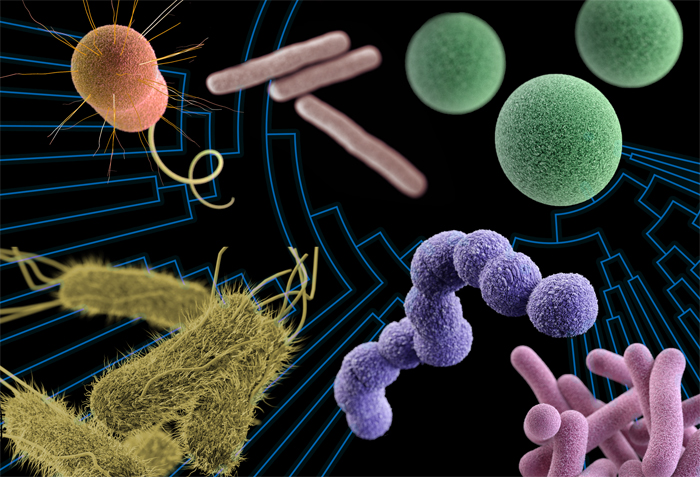News
Tracing Bacterial Evolution Across Billions of Years
Image courtesy of Germán Plata and Dennis Vitkup.
Columbia News has just published an article covering recent research by associate professor Dennis Vitkup and postdoctoral research scientist Germán Plata that uses simulations of bacterial metabolism as a lens for studying how phenotypes adapt and diversify across evolutionary time scales. The article reports:
Despite their omnipresence, microbial evolutionary adaptations are often challenging to study, partly due to the difficulty of growing diverse bacteria in the lab. “Probably less than a dozen bacteria are really well studied in the laboratory,” Vitkup says.
Writing in the journal Nature this past January, Vitkup and Plata applied computational tools to investigate bacterial evolutionary adaptations by simulating metabolism for more than 300 bacterial species, covering the entire microbial tree of life.
To make sense of the puzzling nature of evolutionary adaptations over billions of years, Vitkup invokes Darwin’s famous finches. Over the course of a couple million years, finches on different islands developed different forms of beaks that allowed them to pick up and eat different kinds of seeds. The differences in animal appearance, such as beak shapes or even behavior, are the external manifestations of genetic differences, what researchers usually call phenotypic differences. “But how do you compare phenotypic differences among bacteria over billions of years?” Vitkup asks.
Vitkup and Plata started with one key idea: that the crucial factor in bacterial survival is their ability to grow on different food sources. A particular bacterium’s phenotype depends on its ability to convert available nutrients into the chemicals that it needs to grow and reproduce. The team then used bacterial metabolic simulations to predict phenotypes across hundreds of environments. “Bacterial metabolism serves as a kind of microscope to discern patterns of phenotypic adaptation and diversification,” Plata says.
Vitkup’s team discovered that long-term bacterial adaptation proceeds via two different stages. Initially, there is a relatively fast diversification lasting tens of millions of years, which is then followed by a slow divergence process continuing for billions of years.
Surprisingly, the team was able to describe the average long-term diversification by a simple mathematical model. It shows that, on average, there is a constant rate of phenotypic change on the scale of billions of years, revealing the continuity of bacterial adaptation since the beginning of life on our planet.
You can read the full article here.
Related publication
Plata G, Henry CS, Vitkup D. Long-term phenotypic evolution of bacteria. Nature. 2015 Jan 15;517(7534):369-72.
